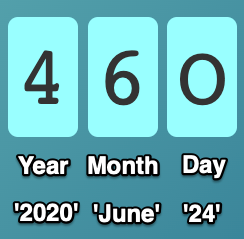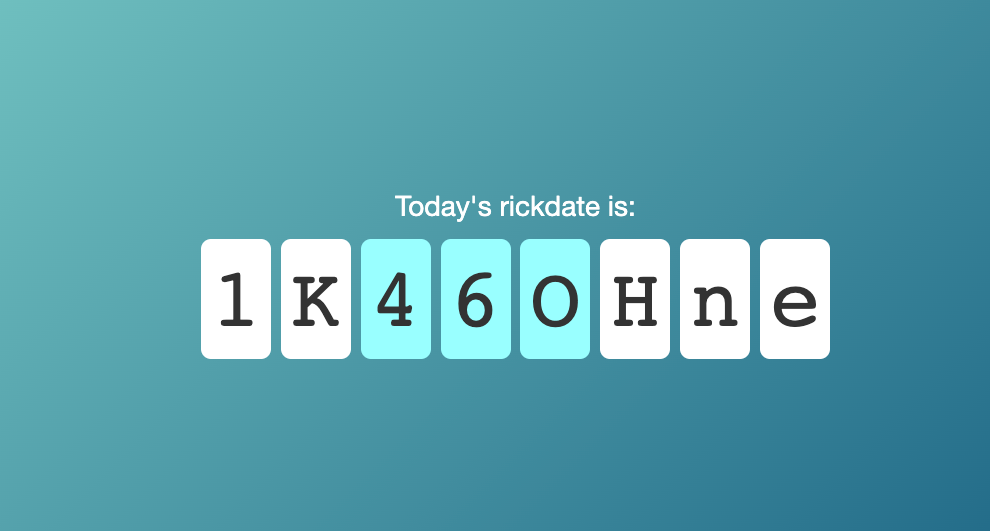This one was done as a fast favor to a friend who wanted me to make a clock that would tell him the RickDate as an Android widget (and I might yet!). Instead I made a simple web app that does the same thing. I intended it as a quick prototype for future development.
RickDate is explained in further detail here.
RickDate is a base-36 system that uses all ten digits (0-9) as well as all the letters of the alphabet (A-Z) as a date-writing shorthand.
While the year is calculated in Base 36 (and often only the last digit is used), the rest of the system still adheres to our conventional understanding of days and months.

This is why having a web app is useful.
The advantages of RickDate over a conventional dating system
- Rather than arguing over MM/DD or DD/MM and the confusion that results from it (Is “03/07” March 7 or July 3?) Rickdating cuts all of that out and just has YMD.
- Expressing the date in YMD format allows us to go from typing 10 characters in “MM-DD-YYYY” (including the dashes!) to just 3. I’ve found myself using it to sign high scores in video games because it’s a compact enough format to help date and track the last time I reached the 768 tile in Threes.
- We no longer need to keep track of a tens place on any of these digits!
- Removing the dashes and slashes (and the tens place!) prevents confusing mishaps with the number ‘1’ or the letter ‘I’. Using a font with distinct forms of these letters will help, too.
- Dated files can be alphabetized and easily compared against to see how much time has elapsed since.
How to read the RickDate clock
In order to make learning the Rickdate system easier, I’ve included a “conventional” clock on the top of the page, and color-coded it to highlight the date.
JimDate is a similar (competing) format that adds on the lowercase letters (a-z) in order to achieve base-60 timekeeping. I’ve used Jimdating on the right end of the clock in order to have a “ticking” portion of the clock that you can see updating in real time. This is my own modification to the RickDate standard in order to stick with the ‘one digit’ approach to timekeeping.
